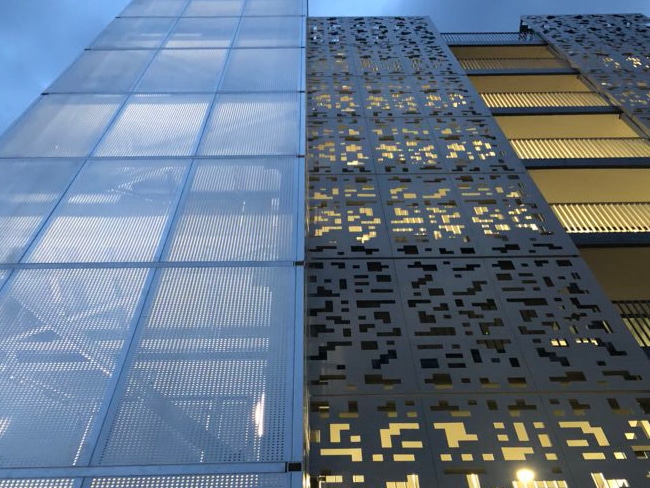JB Products fabricates a range of premium aluminium profiles used primarily for large scale residential projects. Our bespoke aluminium façade products range from bracketry to cladding, and are all manufactured with high levels of care to ensure they fulfil all client expectations.
With years of experience, the dedicated team at JB Products work alongside architects and quantity surveyors to determine the correct specifications for individual projects, whether that may be EWI system solutions or bespoke, ornate decorative façades. Our expertise within our industry allows us to support clients throughout this process, for the production of a high quality, aluminium or stainless steel products.
Expansive
plant list
JB Products houses an expansive plant list to undertake the manufacturing of our aluminium products, alongside stainless and galvanised products. Investing in the latest CNC punch press and press brakes, we consistently adhere to tight tolerances; we further offer welding for the subassembly of parts, and a range of finishes, to ensure products are ready for a quick and straightforward installation.
With our transportation, and FORS accreditation, JB Products offers the safe delivery of products to site, and can further supply installation for a complete end-to-end service. We do this for clients across the UK.
JB Products works with aluminium and steel gauges between 0.70-10.00mm, and can advise clients on the most suitable gauge for their application.

A façade is the front facing exterior of a building; this may include incorporating several materials, colours, and features on the front of a building which have both a design and structural purpose. For instance, a facade encompasses placement of windows and doors, sealing of windows, cladding, and lighting, amongst other things. A façade may also impact the energy efficiency of a building, so it's important to choose a façade in light of this.
A façade has a greater purpose than just a design element. It can directly impact water ingress, energy efficiency and insulation, ventilation, wind-resistance, and light levels; for large scale builds, this is an important factor in minimising energy costs and reducing chances of damage.
When correctly designed and installed, a façade can become a primary defence against weather, allowing any water that does penetrate to seep back out; it can help a building to retain heat in cold conditions and deflect it in hot; and control air permeability for ventilation.
Several materials are commonly used for façades, each with their own pros and cons.
Aluminium and steel are both common metal façade materials, since they have great design flexibility, whilst maintaining a functional efficiency; aluminium is moreover cost effective for large scale builds. Another popular choice is stone, which is great for insulation, whilst achieving a pleasing aesthetic. Wood is a traditional material choice, however it must be treated for efficiency against fire and environmental conditions. Finally, glass is great for allowing natural lighting to pass through, however must be used selectively due to the fragility of the material.